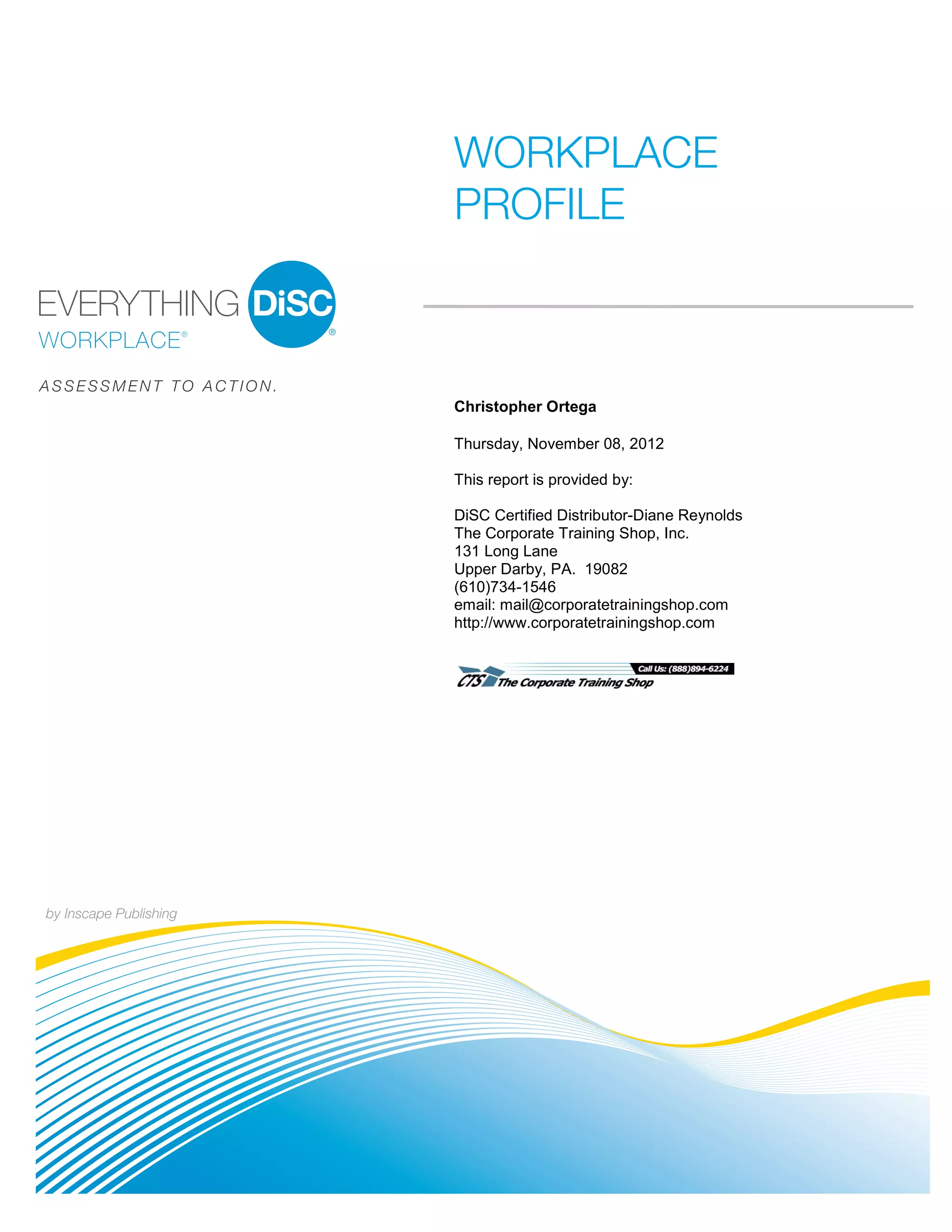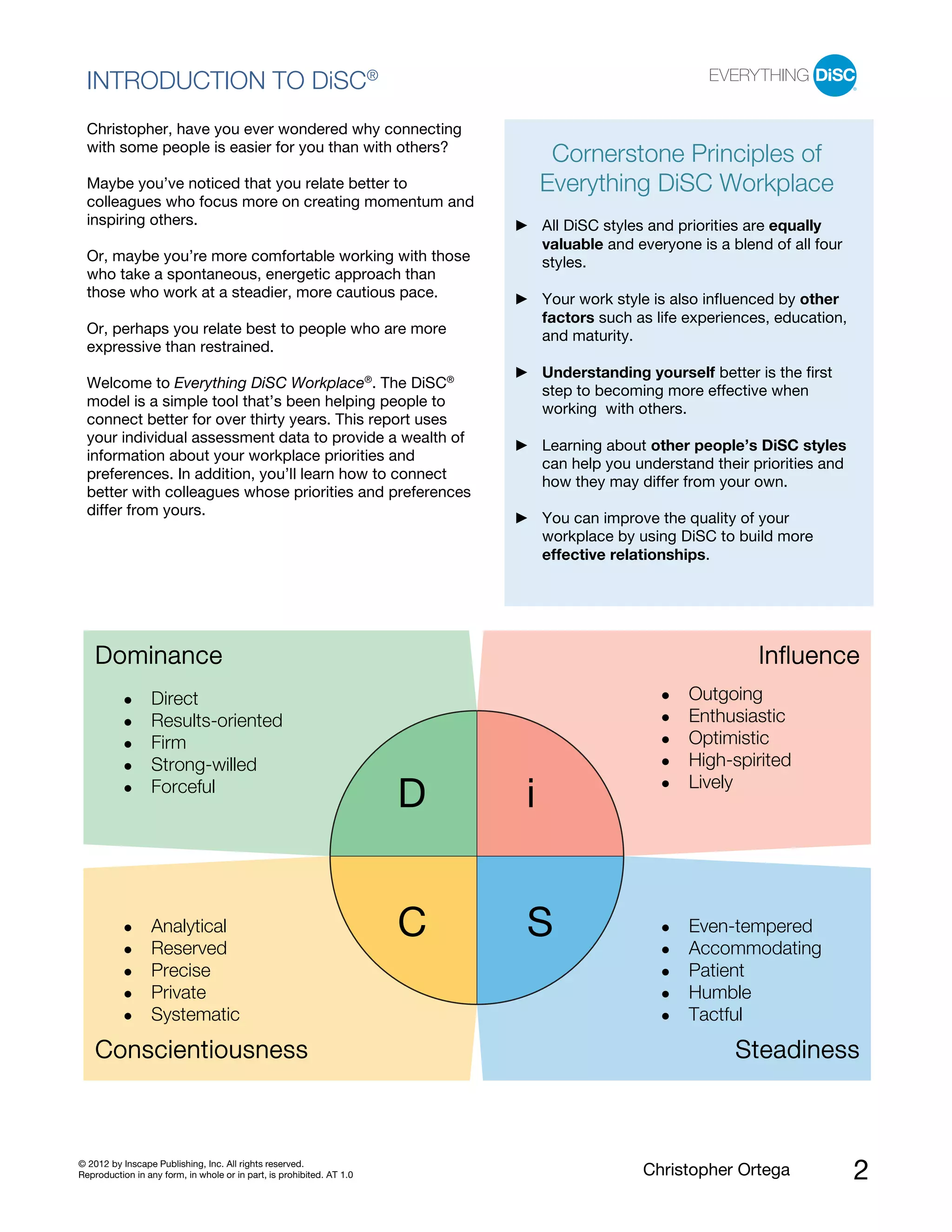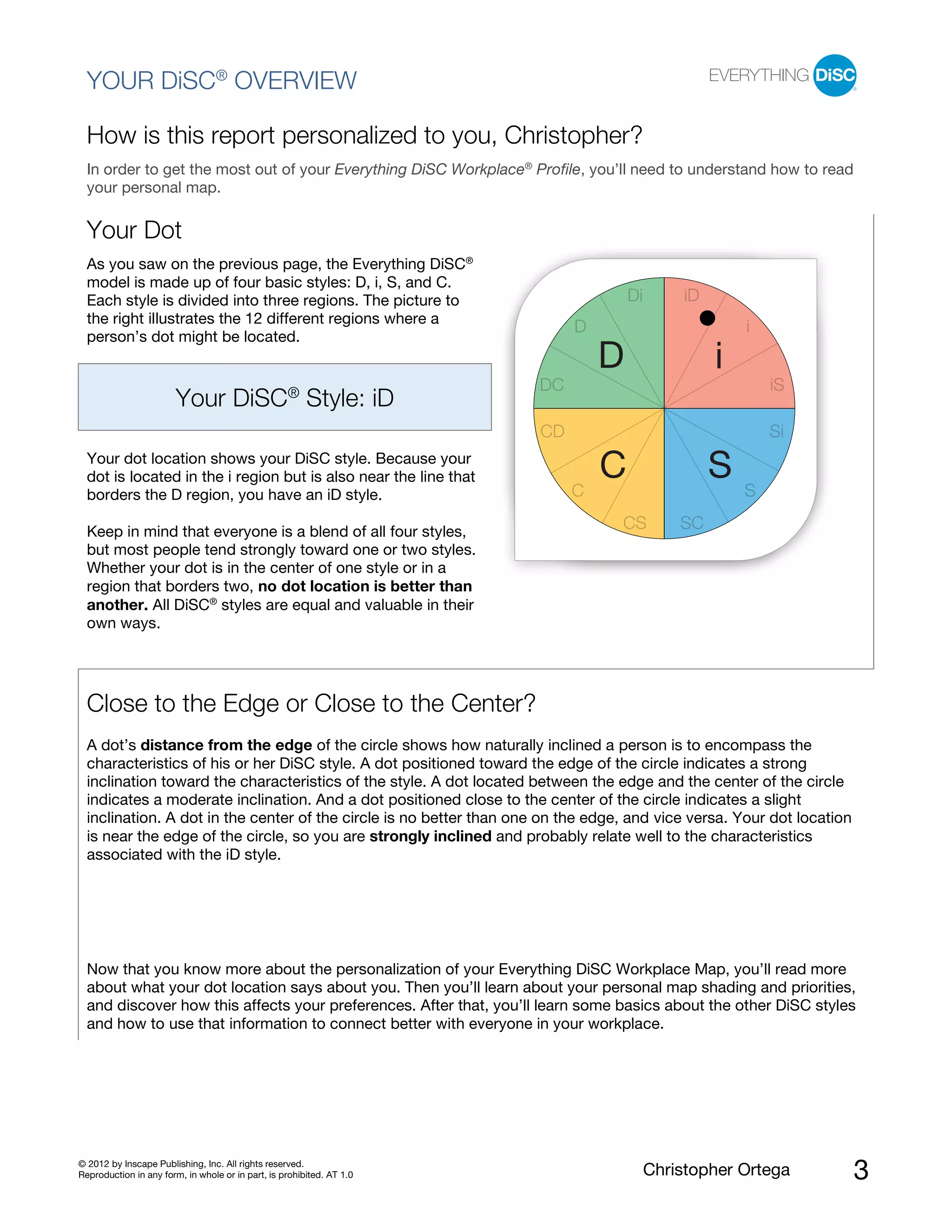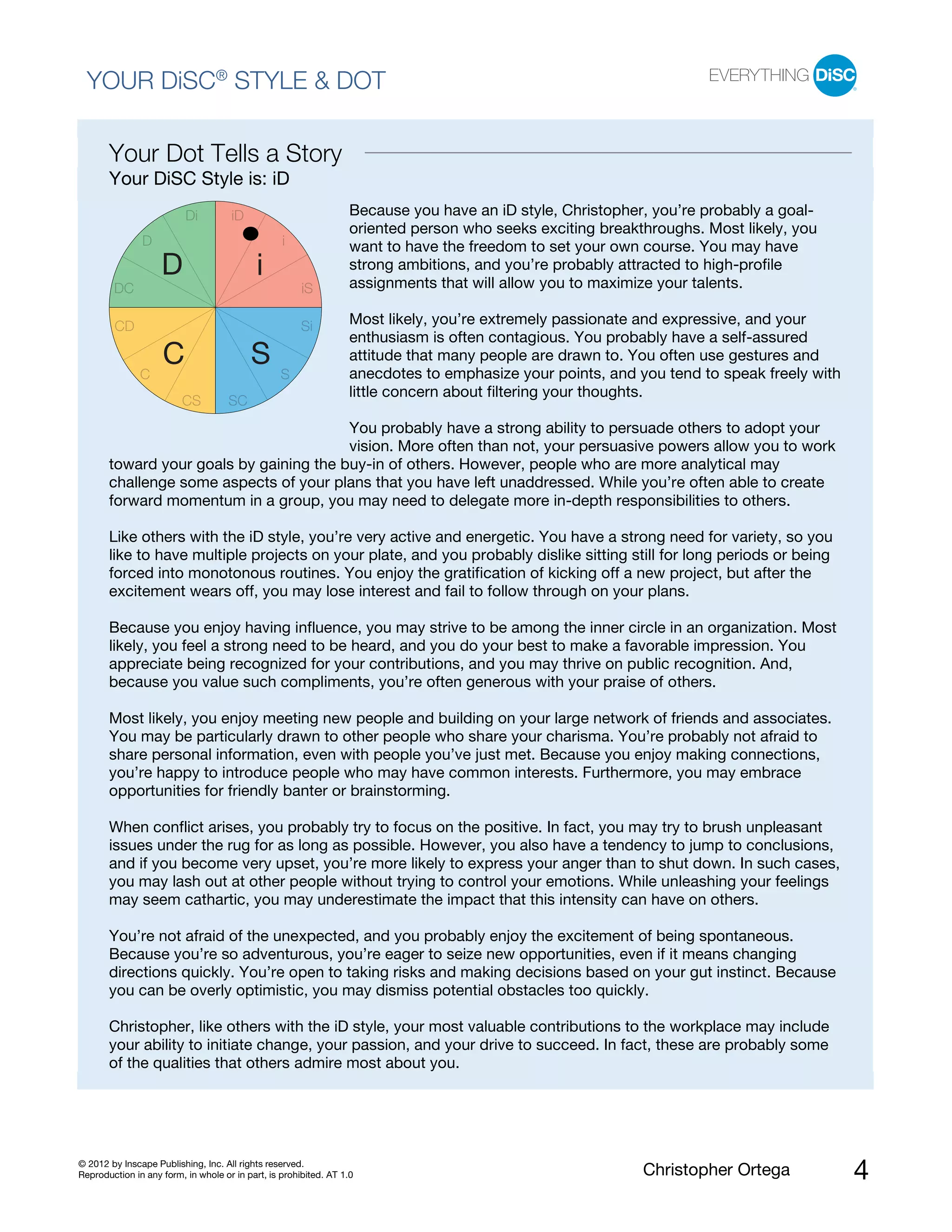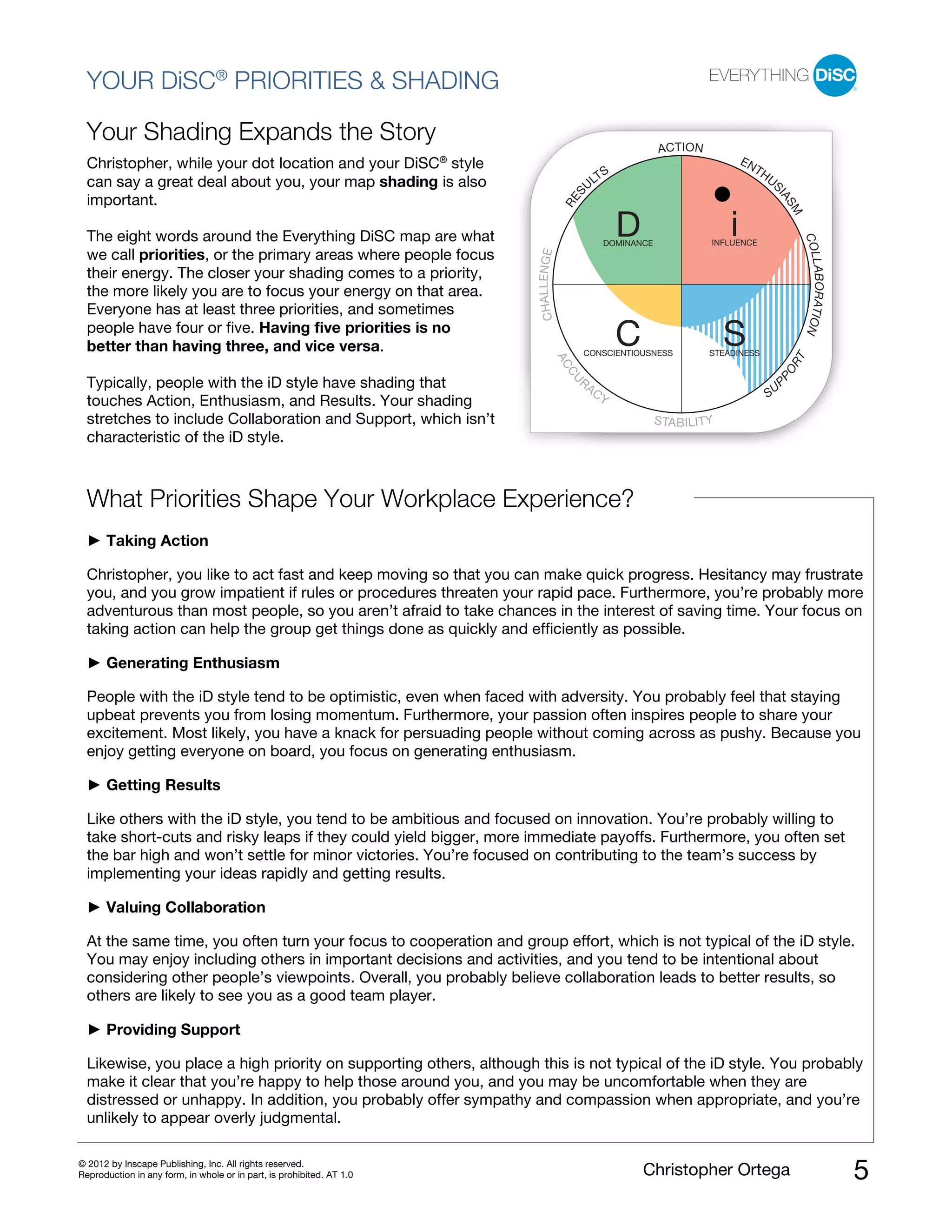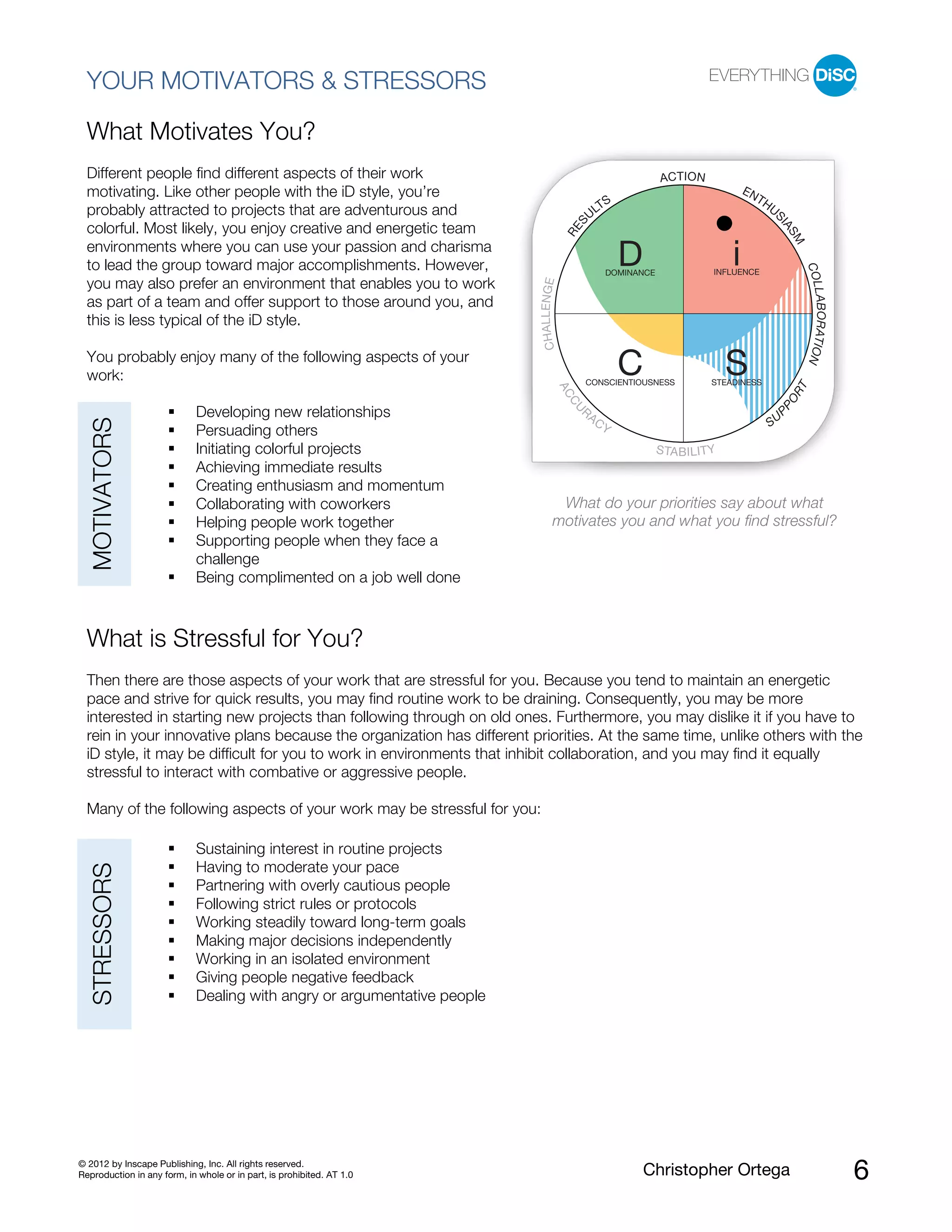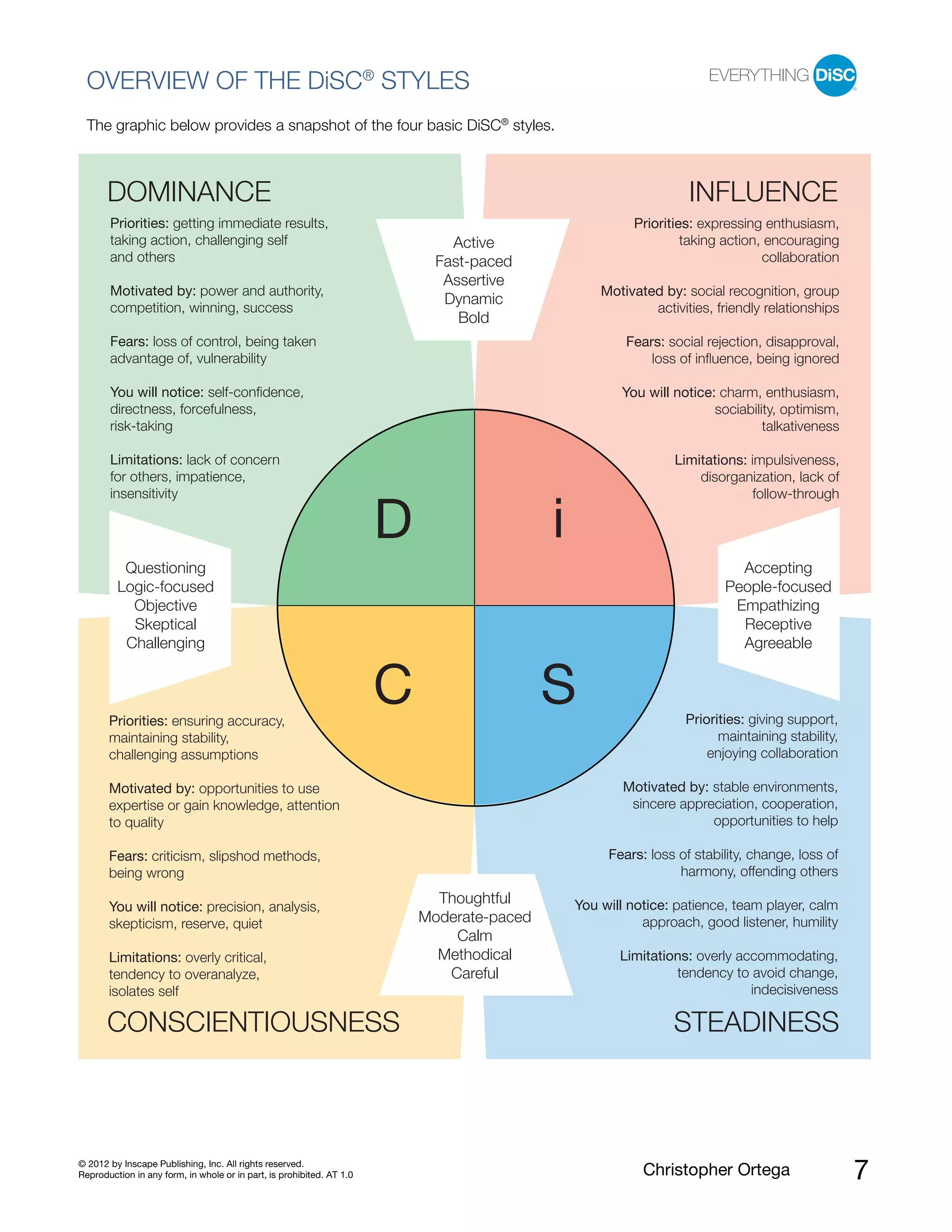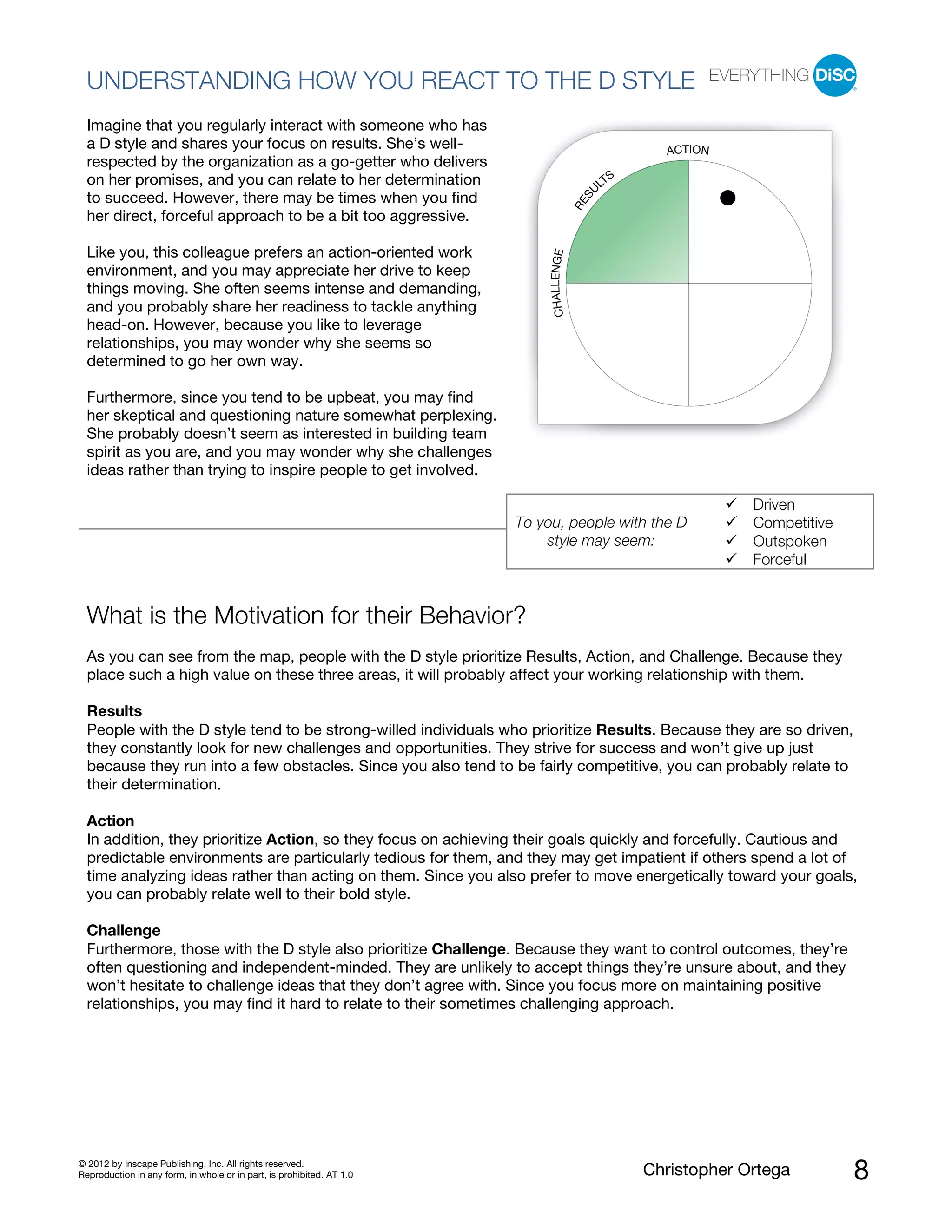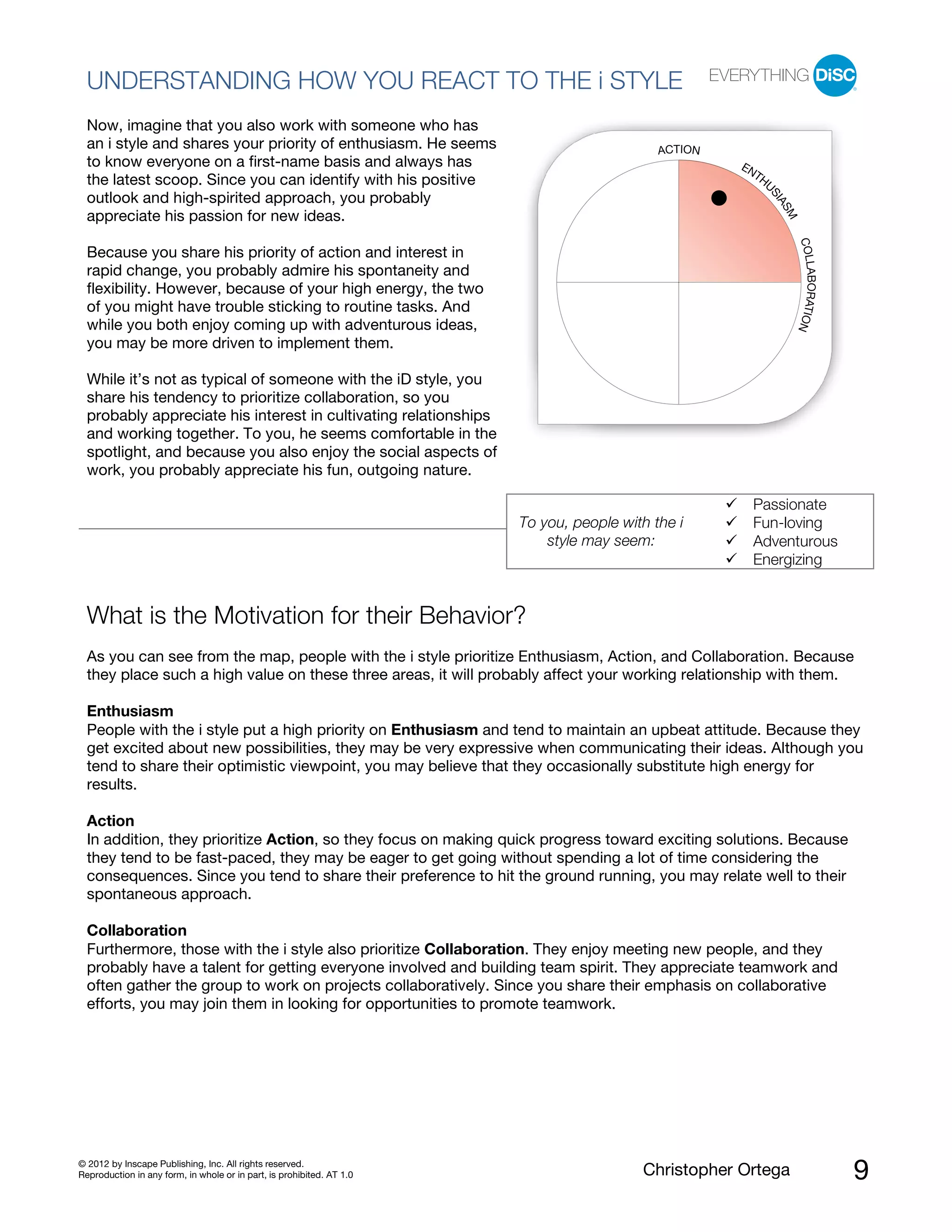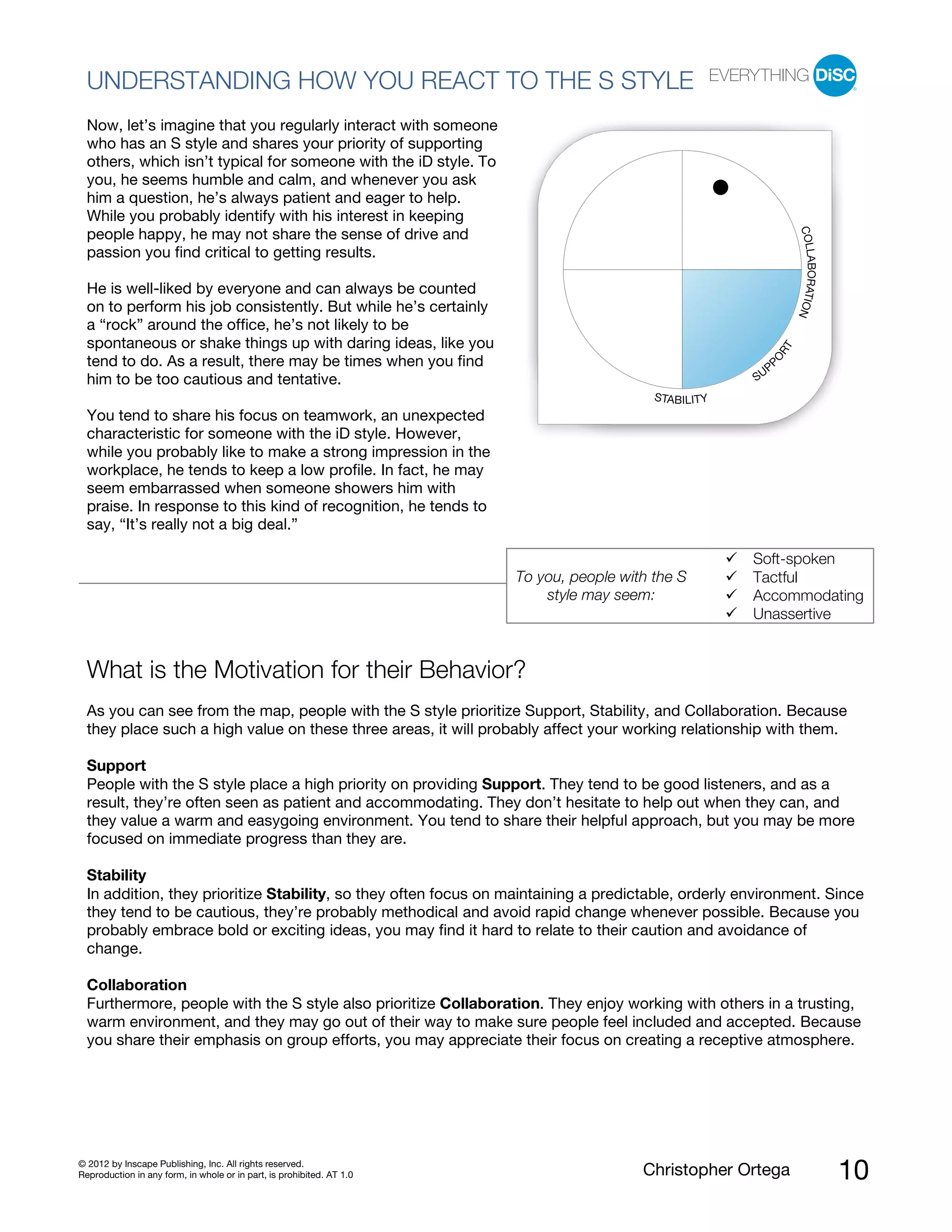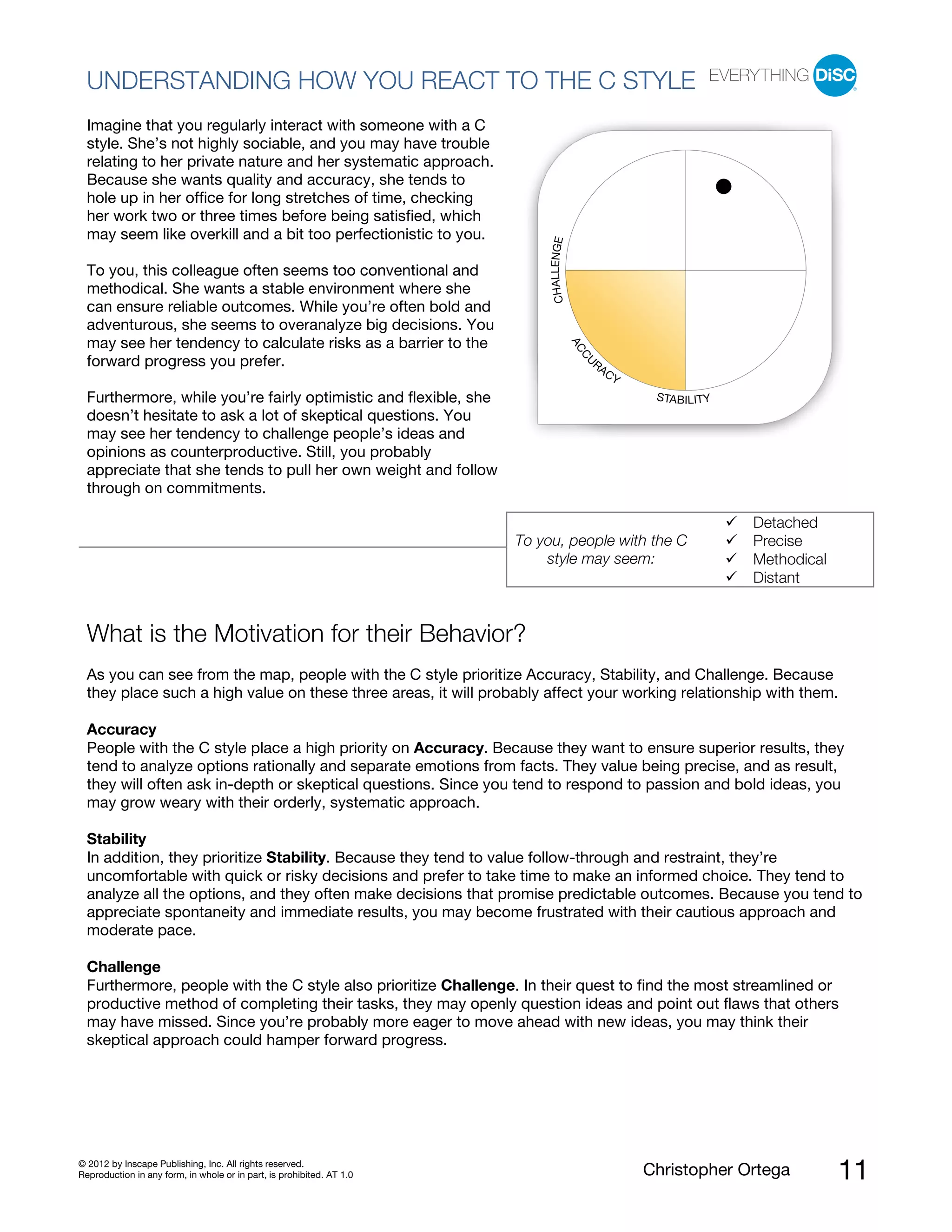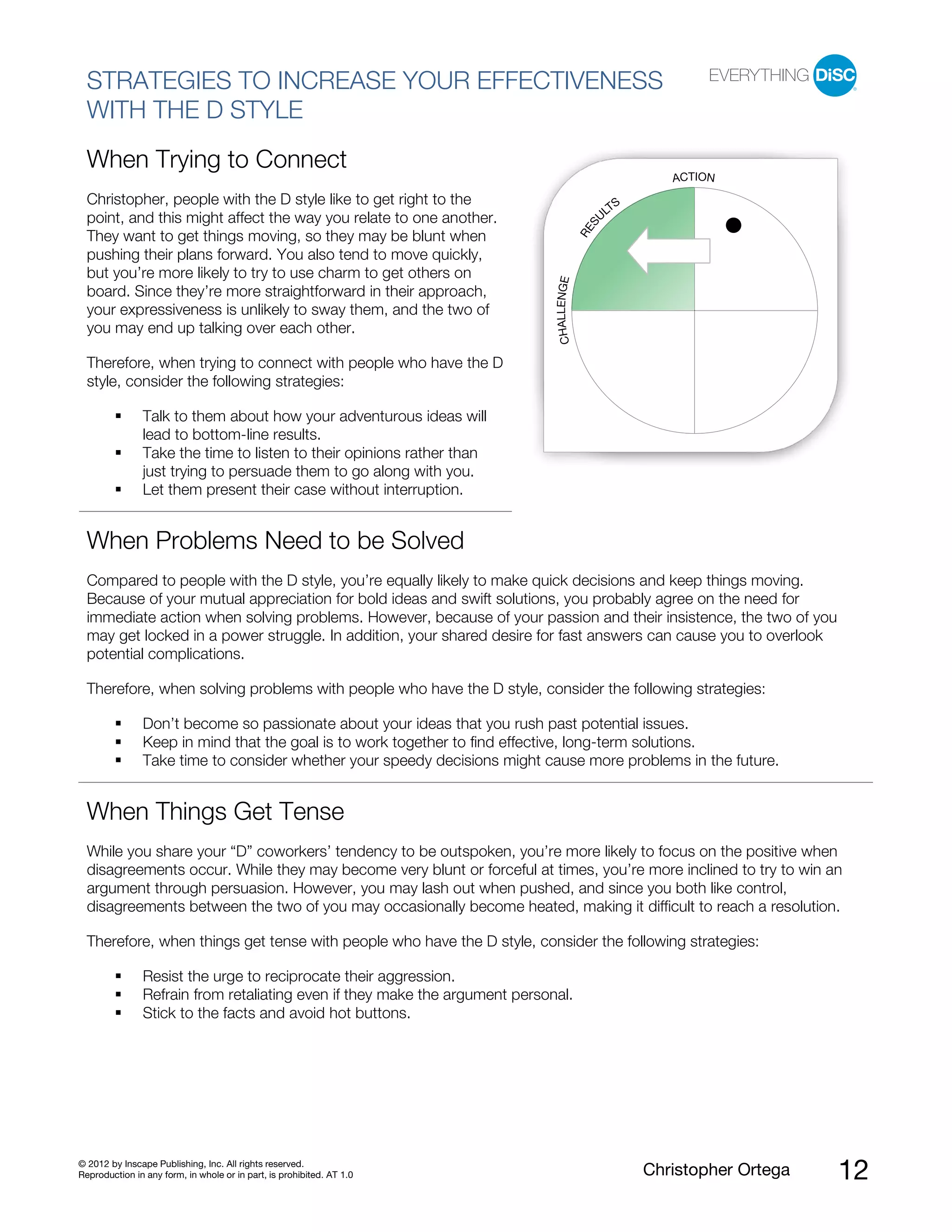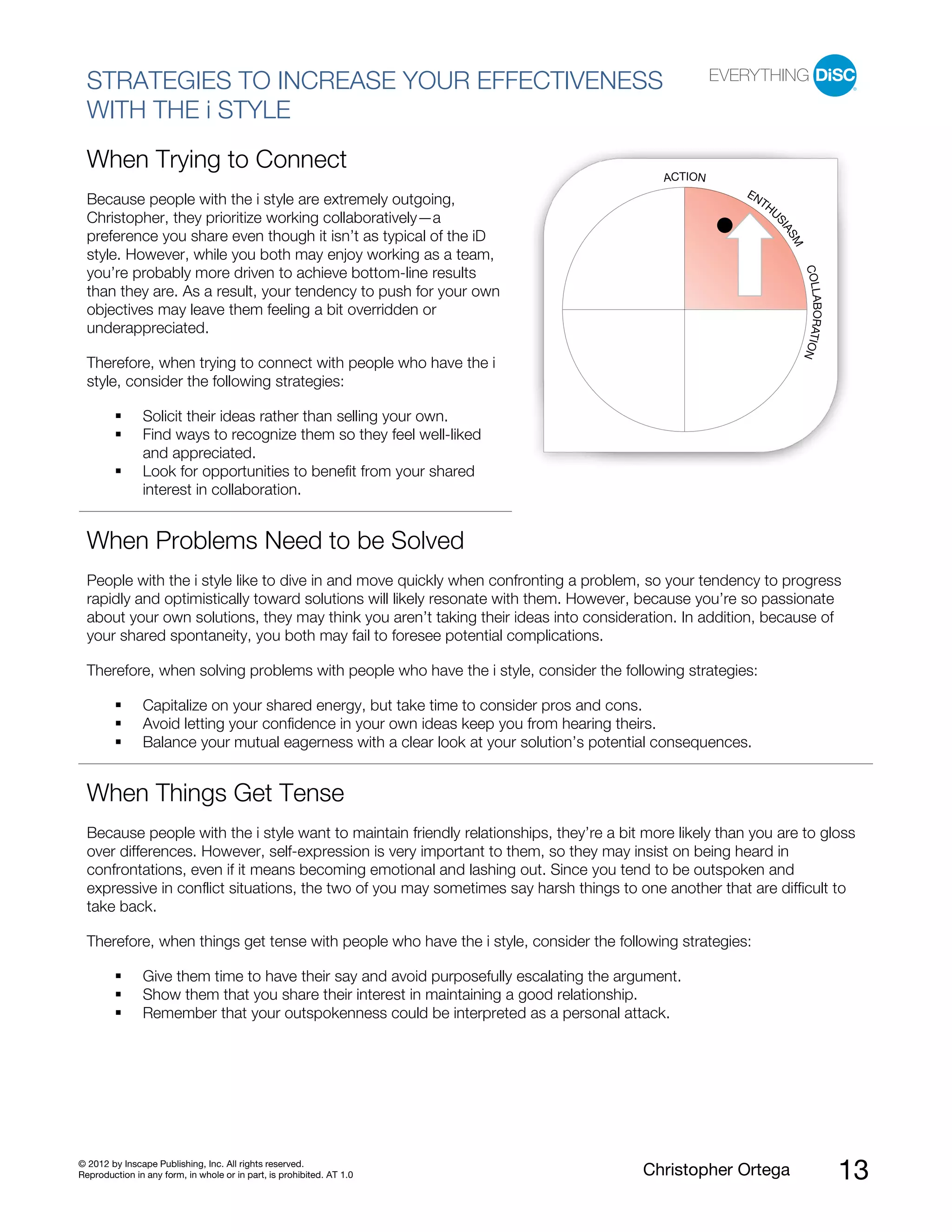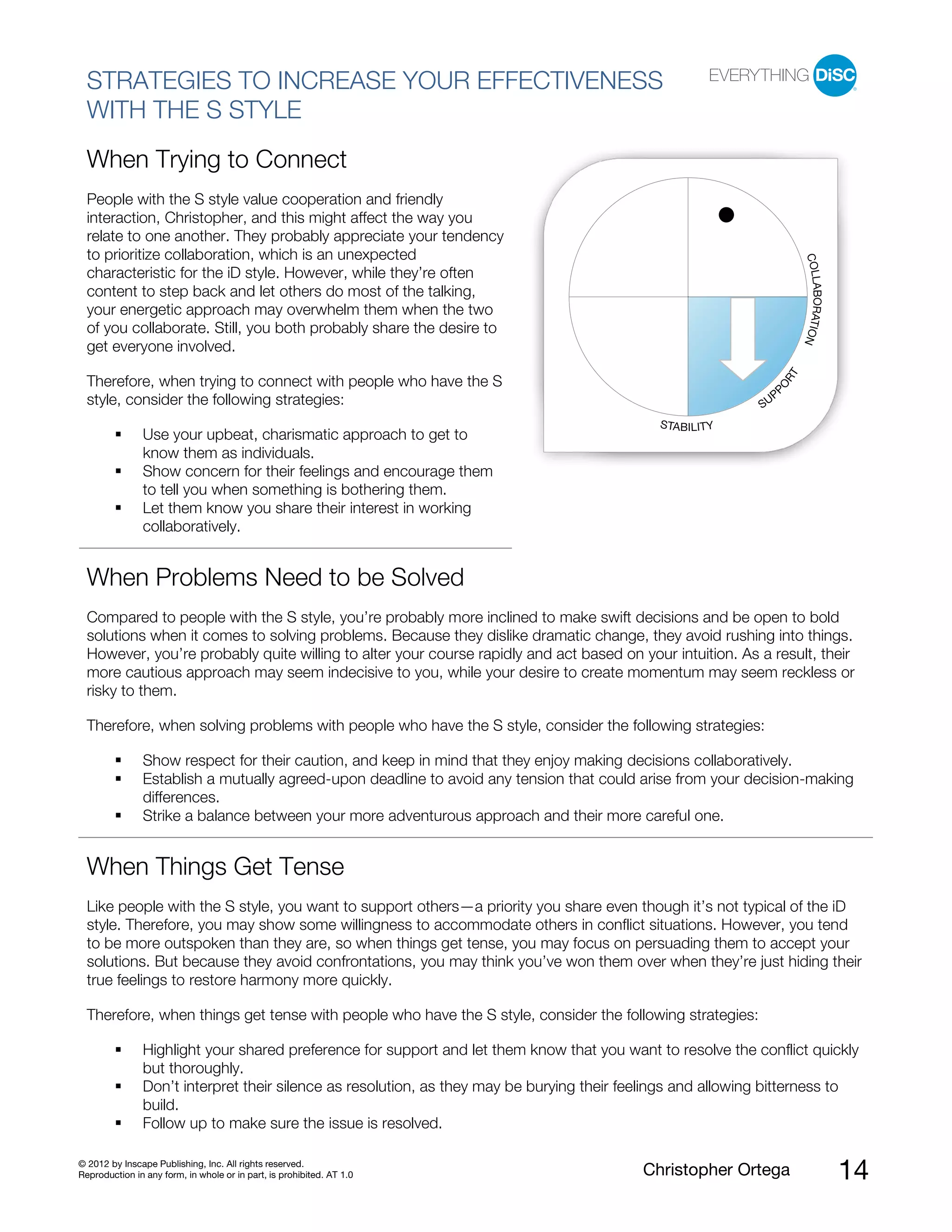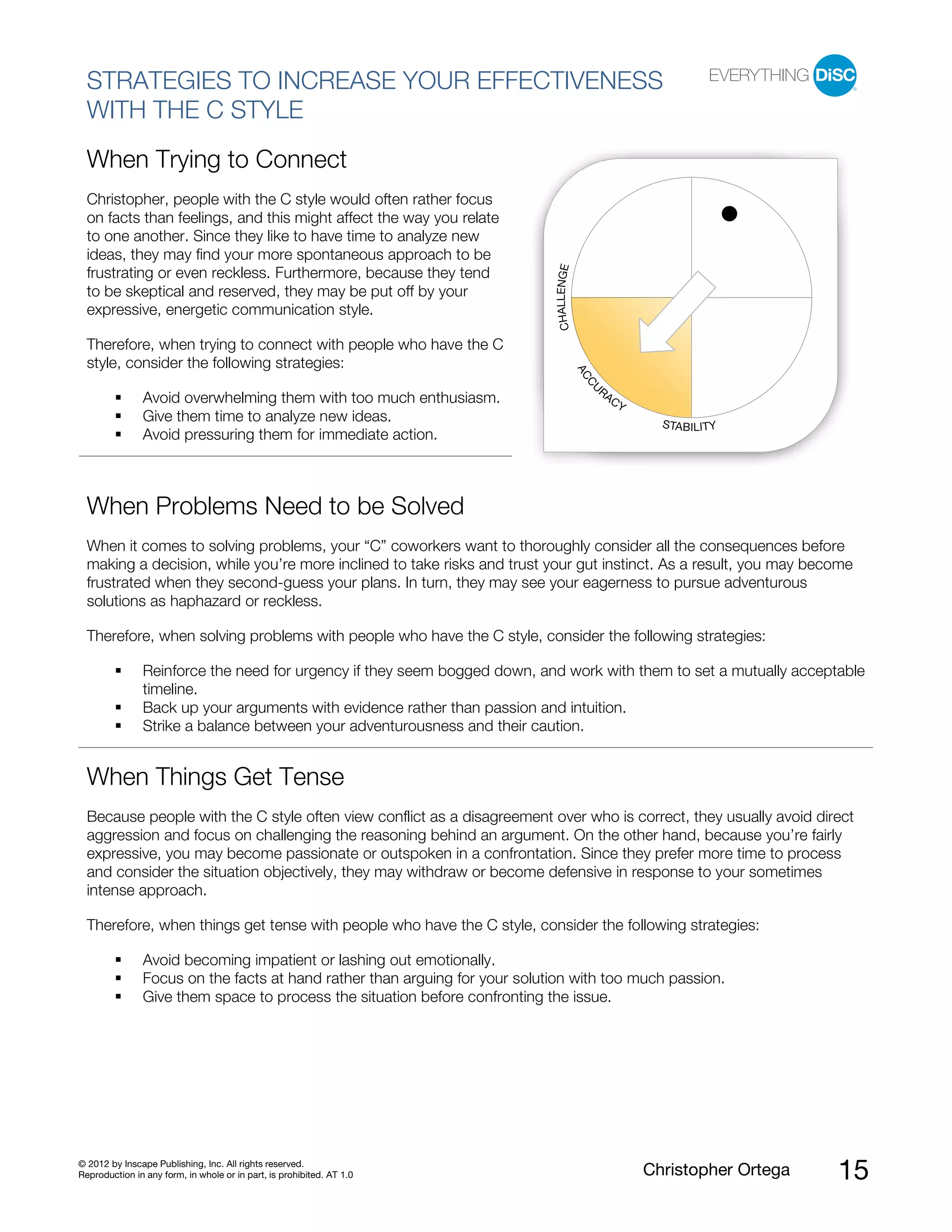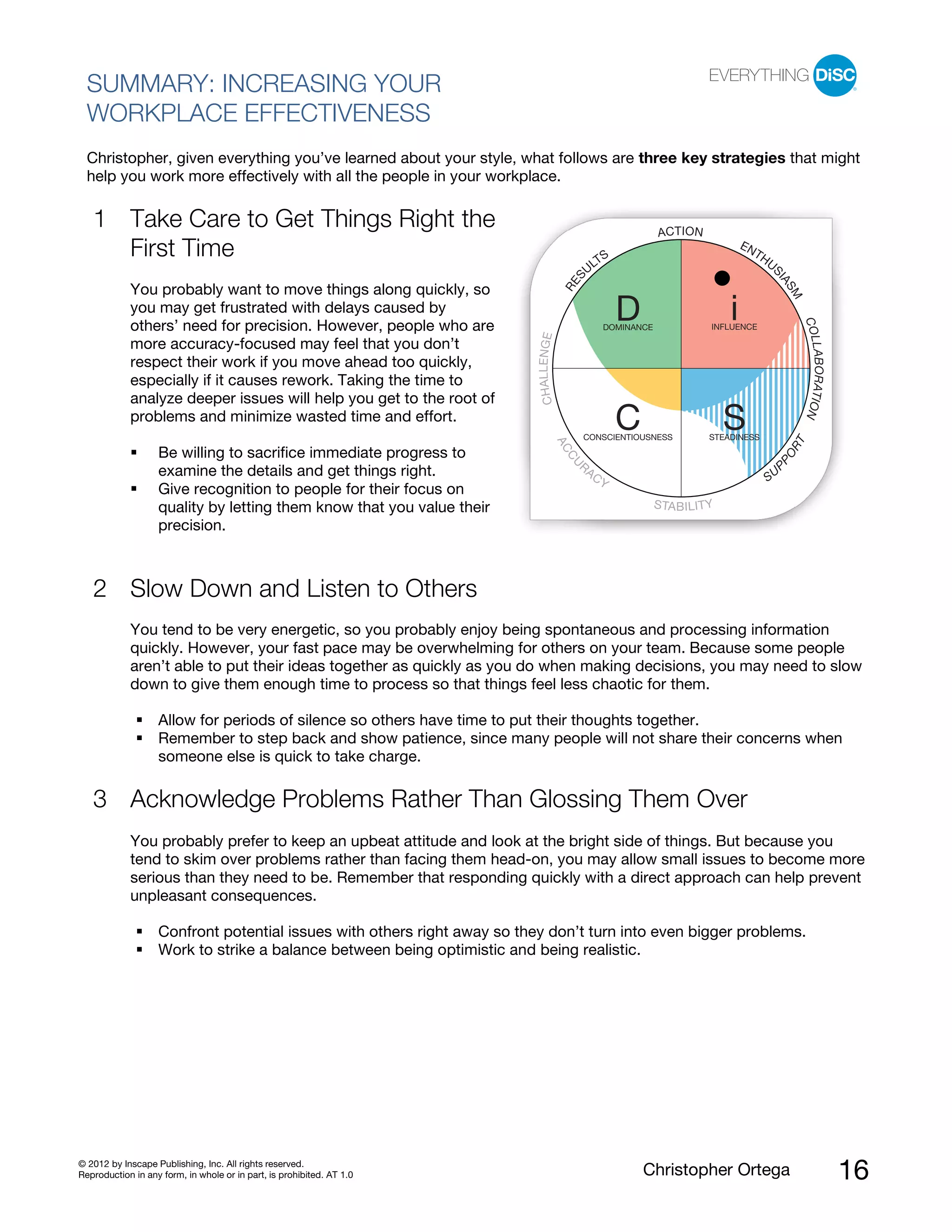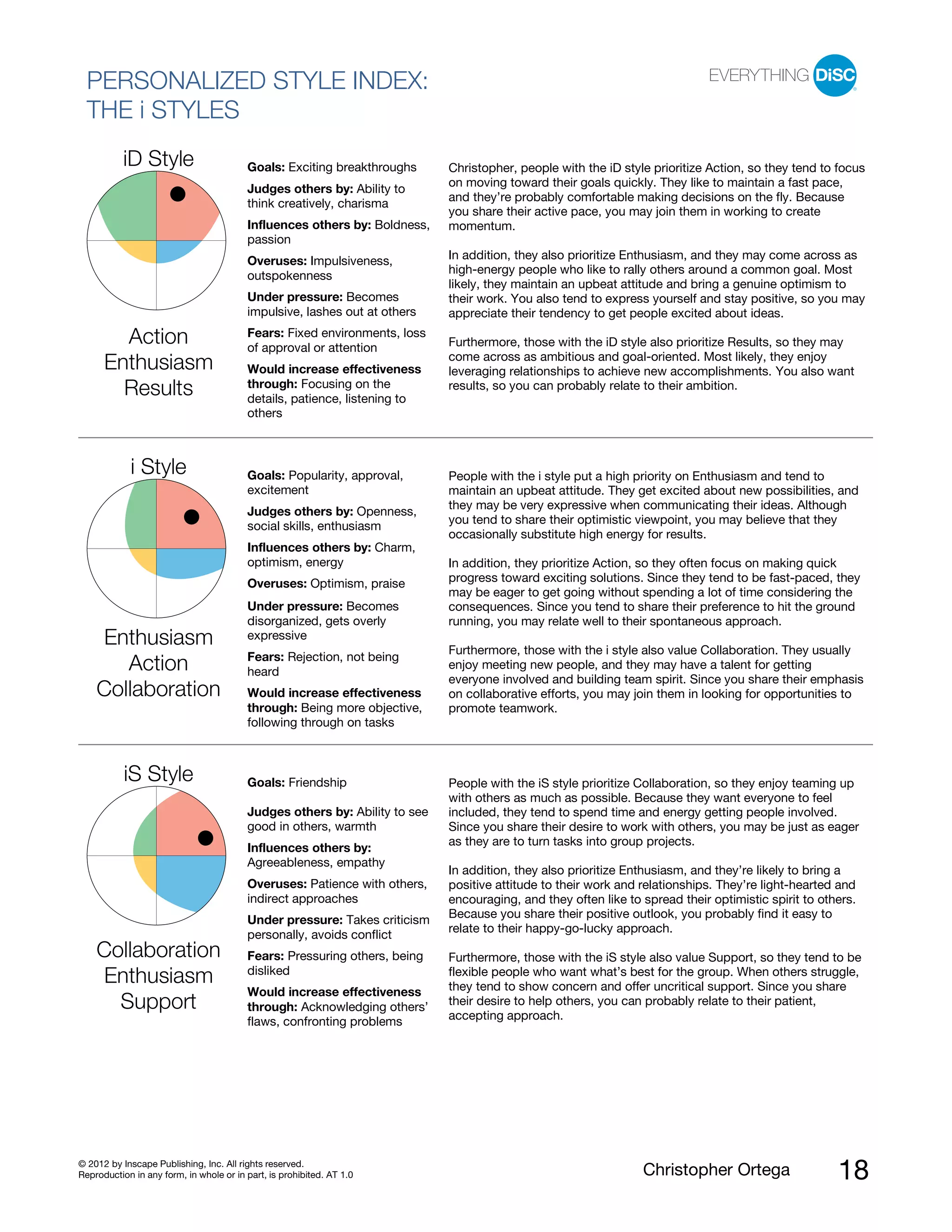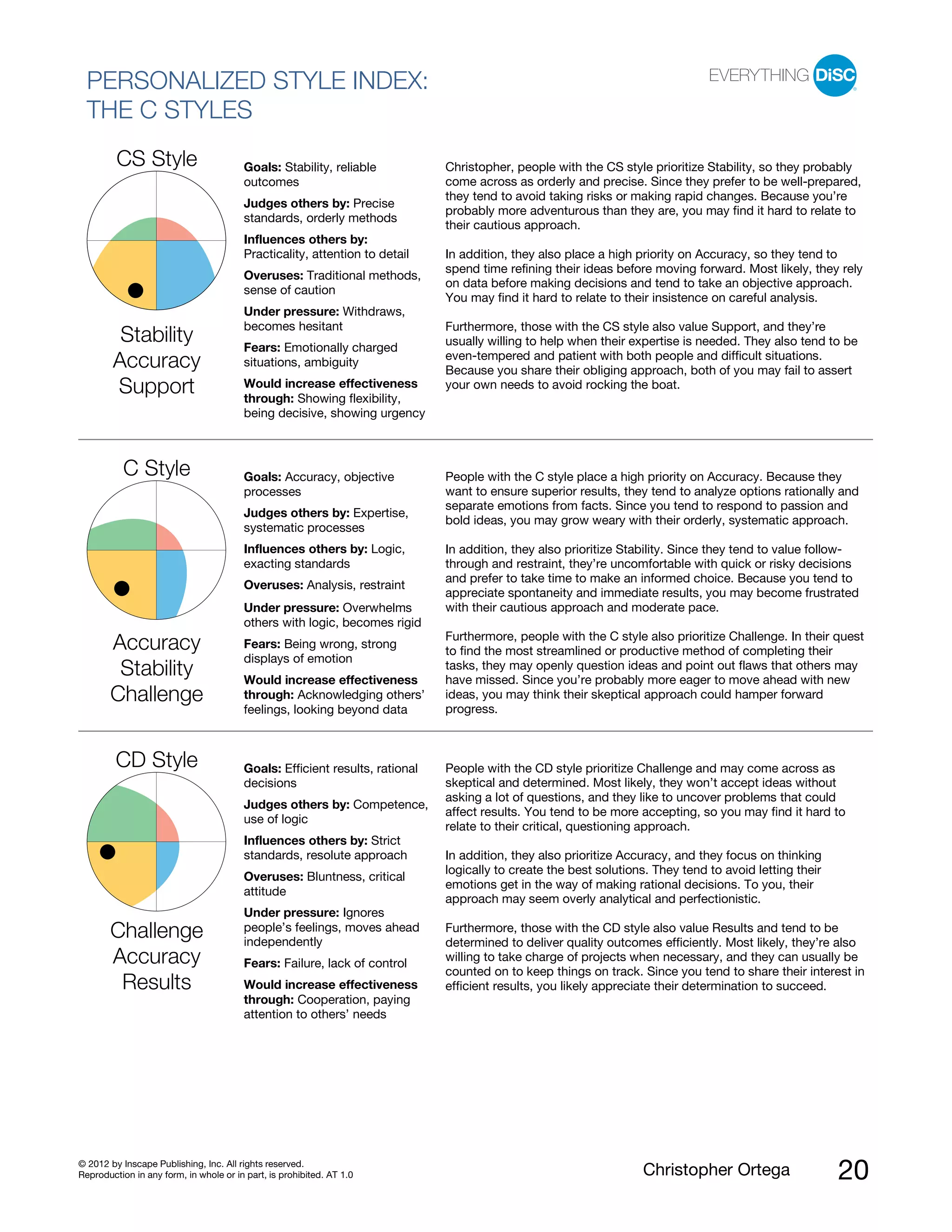This document provides Christopher Ortega with a workplace profile assessment based on his DiSC assessment results. It introduces the Everything DiSC model and explains that DiSC identifies four basic styles - D, i, S, and C - that provide insight into how people prioritize and process information. Christopher's results indicate he has an iD style, which means he is strongly inclined toward the characteristics of the i and D styles. The document analyzes how his dot placement and style shading provide insights into his workplace priorities, preferences, strengths, and challenges in interacting with others. It provides this information to help Christopher better understand himself and connect more effectively with colleagues.
